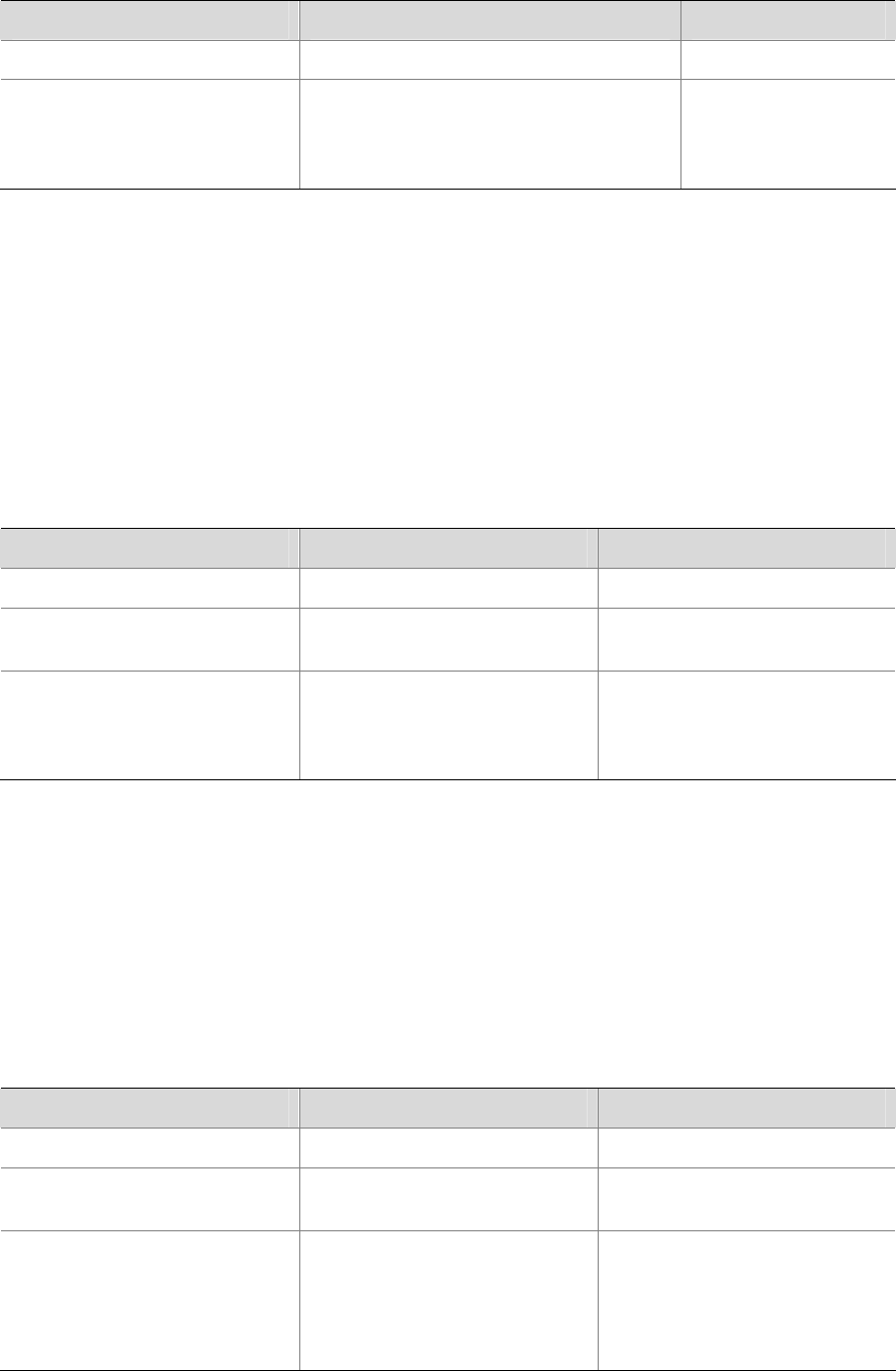
1-11
Follow these steps to configure a static neighbor entry:
To do... Use the command... Remarks
Enter system view
system-view
—
Configure a static neighbor
entry
ipv6 neighbor ipv6-address
mac-address { vlan-id port-type
port-number | interface interface-type
interface-number }
Required
Configuring the maximum number of neighbors dynamically learned
The device can dynamically acquire the link-layer address of a neighbor node through NS and NA
messages and add it to the neighbor table. Too large a neighbor table may lead to the forwarding
performance degradation of the device. Therefore, you can restrict the size of the neighbor table by
setting the maximum number of neighbors that an interface can dynamically learn. When the number of
dynamically learned neighbors reaches the threshold, the interface will stop learning neighbor
information.
Follow these steps to configure the maximum number of neighbors dynamically learned:
To do… Use the command… Remarks
Enter system view
system-view
—
Enter VLAN interface view
interface interface-type
interface-number
—
Configure the maximum
number of neighbors
dynamically learned by an
interface
ipv6 neighbors
max-learning-num number
Optional
The default value is 2,048
Configuring the attempts to send an ns message for duplicate address detection
The device sends a neighbor solicitation (NS) message for duplicate address detection. If the device
does not receive a response within a specified time (set by the ipv6 nd ns retrans-timer command),
the device continues to send an NS message. If the device still does not receive a response after the
number of attempts to send an NS message reaches the maximum, the device judges the acquired
address is available.
Follow these steps to configure the attempts to send an NS message for duplicate address detection:
To do… Use the command… Remarks
Enter system view
system-view
—
Enter VLAN interface view
interface interface-type
interface-number
—
Configure the attempts to send
an NS message for duplicate
address detection
ipv6 nd dad attempts value
Optional
1 by default. When the value
argument is set to 0, the
duplicate address detection is
disabled.


















